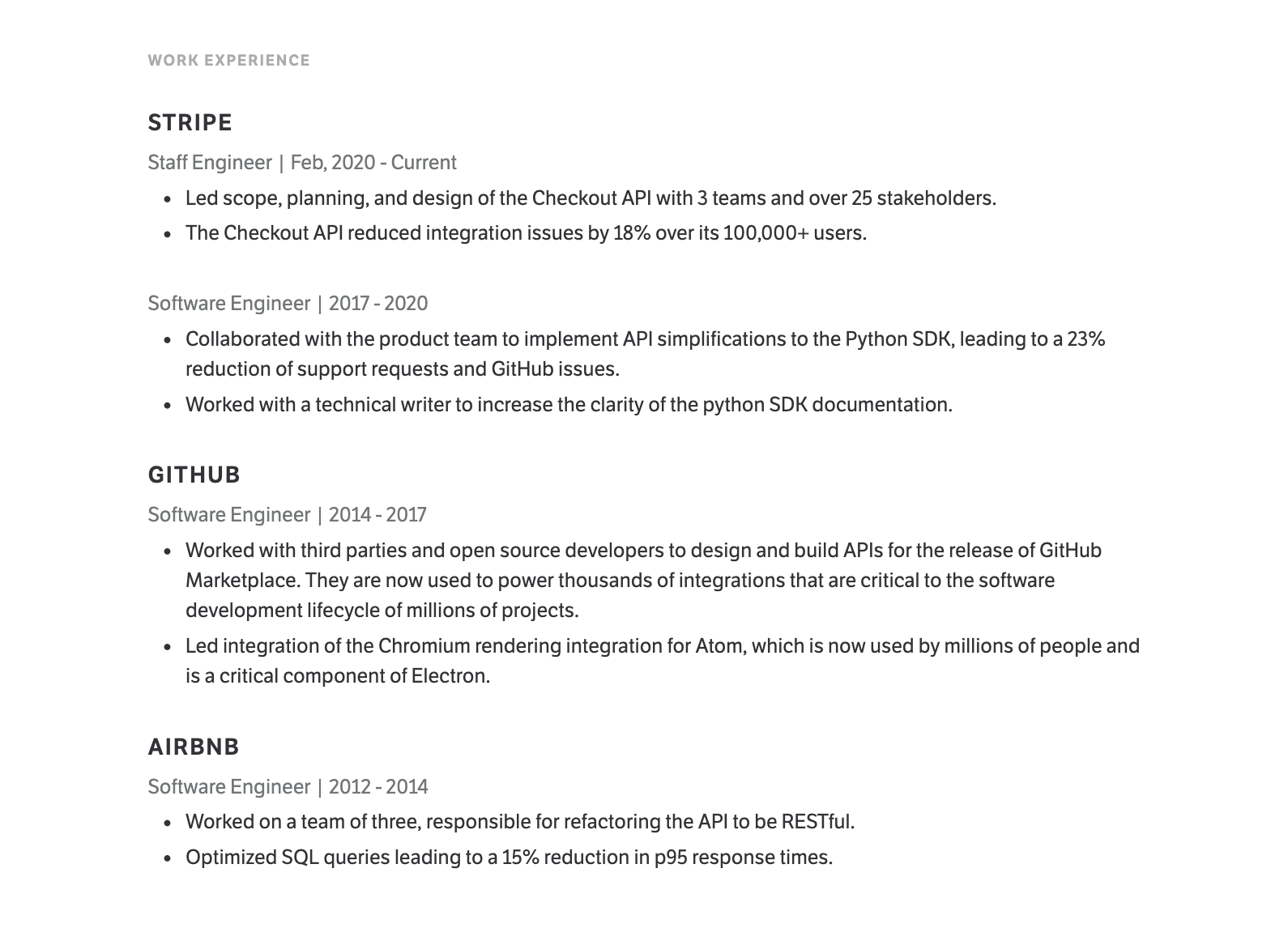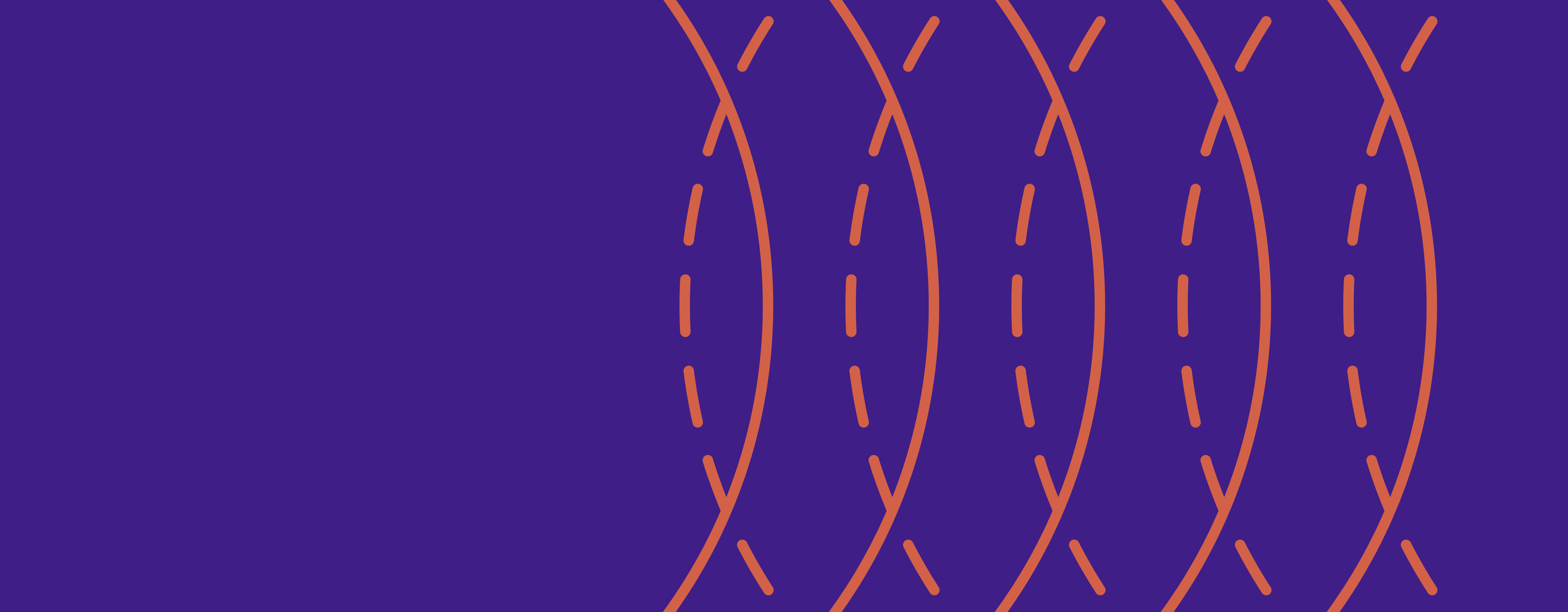Resume resources
How to Create a Software Engineer Resume Hiring Managers Will Love

A thoughtfully crafted software engineer resume will expedite your job search and help you land an interview in no time. But, where do you start? We can show you an easy resume template hiring managers will love.
Securing a software engineer job requires a polished resume that highlights your work experience, qualifications, and technical skills. Your resume needs to effectively communicate that you have the skills and experience required to become a top contributor.
In this article, we’ll show you how to build a cohesive resume that will help you land your dream job. We’ll go over what hiring managers are looking for, design elements to include, and what to highlight in each section.
Create a Convincing Software Engineer Resume
Hiring managers are looking for employees who can quickly start contributing to the team. They want candidates who have extensive experience and can make an immediate impact without much guidance.

Every company has a different technology stack — programming languages, frameworks, databases, and other software tools that are unique to their company. It will be up to you to show you have the technical skills to match their technology stack. You also have to show the ability to learn technical skills you don’t already have.
The best place to start is with a thorough understanding of the job description. You should customize your resume to fit the job you’re applying to. You may have experience across a wide range of software engineering areas, but you should focus on the information that’s relevant to the job posting.
You should customize your resume to fit the job you’re applying to
For example, let’s say you’re applying for a back-end web development job and you have both front-end and back-end engineering experience. You should focus on your relevant back-end experience to show that you’re the right candidate for the job. Your front-end experience can be used to show experience programming, but should be secondary to experience relevant to the application.
Next, you need to move on to formatting your resume into something that’s easy for hiring managers to scan and read.
Structure of Software Engineer Resumes
Your resume needs to be professional looking and well-organized. You should consider three main areas when designing your resume — including the right resume style, formatting, and resume sections.
Resume Style
Experienced software engineers should use a reverse chronological resume as opposed to a functional or combination resume. Software engineers who are early in their career or have less experience can opt for a functional or combination resume.
A reverse chronological resume is the best format for experienced software engineers because it starts with your most recent experience and works its way through your previous job titles.
They effectively show hiring managers the responsibilities, accomplishments, and results from each job you held. They also show how you have grown and progressed throughout your career.
Functional and combination resumes are a good choice for recent grads or those with less experience. A functional resume focuses on your general skill set rather than talking about the real-world experience you’ve amassed. A combination resume takes the best aspects from a functional resume and chronological resume and blends them together.
Resume Formatting
As a software engineer, you aren’t expected to be a graphic design expert, but a well designed resume can make a big difference. Most recruiters only spend a few seconds on their initial resume scan. A scannable resume maximizes the time you have to get their attention. You should leverage clean and professional formatting which includes choosing the right margins, spacing, color usage, and font.
Here are a few design tips to optimize the readability of your resume:
- Margins: Make sure the margins are big enough to support printers, but not so big that they make your resume unnecessarily long.
- Font: Choose a modern and professional-looking font. Readability is critical here.
- Font size: Make sure that the text is big enough that it can easily be read. Don’t be tempted to reduce font size to fit more on the page — it’s better to have two readable pages than one that’s too small to read.
- Spacing: Adding appropriate line spacing increases readability and legibility.
- White space: Give enough space between each section and don’t overcrowd your resume. Removing whitespace has a negative effect on readability.
- Color: You can incorporate color on your resume to make it stand out. Just make sure it’s subtle and doesn’t distract the reader.
- Resume length: You should aim for one page, but if you have lengthy experience, you can extend it to two pages.
Once you've mastered your formatting and are confident that your resume is easy to read, you can start thinking about the content you need in each section of your resume.
Resume Sections
There are five main sections you need to incorporate in your resume if you want to land your dream software engineering job. Each one is critical and serves its own purpose when you're applying for a job.
The five main sections are:
- Contact information
- Resume summary
- Work experience
- Education
- Technical skills
Each of these sections should be clearly separated with easy to read headers. Let’s walk through each section so you can better understand what to include.
Contact Information
The contact and general information section is a requirement for every resume, regardless of profession. The difference with a software engineer is that you should include a link to your GitHub account, if you have one.
The rest of your contact section should include:
- Name
- Title
- City and state
- Phone number

Resume Summary
Resume summaries need to be unique and captivate the reader. This is your opportunity to grab the attention of the recruiter and draw them into reading the rest of your resume.
Your resume summary should highlight what makes you stand out from the other software engineers applying for the same job. Call attention to the programming languages you’re proficient in and the extent of your development experience.
It’s not a bad idea to write your summary after completing the rest of your resume. Then, you can look through your work history, pull out the most impactful callouts, and highlight them in your summary.

Work Experience
Hiring managers will be most interested in your work experience. You should spend the most time on this section and make sure you explain how you successfully completed development projects and drove results for the companies you worked for.
Cover your professional experience with bulleted call-outs of your accomplishments at each job. It’s good practice to include your responsibilities and data-backed results in each bulleted description.
Organize your work experience section using the following pieces of information:
- Job title
- Company
- Dates employed
- 3-4 bullet points highlighting your contributions

Education
The educational section of your resume is still an important aspect, however, you shouldn’t go into too much detail. The more experience you have, the less you need to focus on your education section.
You need to list your university, degree obtained, and dates you attended in your education section. That’s pretty much all you need to include if you already have extensive engineering experience.
You can decide to draw more attention to this section if you have less on-the-job experience. Those who are fresh out of college can include their GPA, but only if it’s above 3.5. You can also include organizations you participated in or unique software engineering projects you completed while attending school.

Technical Skills
The technical skills section of your resume is almost as important as your work experience. It enables recruiters to quickly scan your resume and see what programming languages, software frameworks, and databases you have experience with.
You should only list the technical skills that you’re highly proficient in. Don’t list skills that you’re only familiar with as this may backfire once the interview rolls around. You could potentially lose credibility if an interviewer starts asking questions about a programming language you haven’t mastered.
Here are a few in demand skill for software engineers to get you started.
- JavaScript
- Python
- Ruby on Rails
- C++
- Go
- HTML
- CSS
- Swift
- C#
- SQL
- MySQL
- Git
- Linux
- GraphQL
- React
- Rest APIs
Now that you know what to include in your resume, check out some examples of succesful resumes created by Standard Resume customers.

Show Hiring Managers You’re the Right Fit
You will make your life easy if you put yourself in the hiring manager's shoes. Think about what they're looking for and match your resume to the job description.
Resume writing doesn't have to be a painful process. Follow the software engineer resume advice above, and you shouldn't have a problem securing your first interview.

You can also use our resume builder, which will save you time and energy so you can direct your focus to finding new job opportunities.

Make Your iOS Developer Resume a Seamless User Experience

How to Create a Software Engineer Resume Hiring Managers Will Love

A 5-Step Guide for Writing a Product Manager Resume
